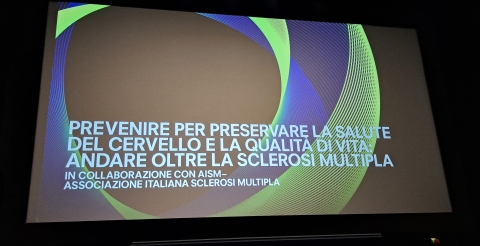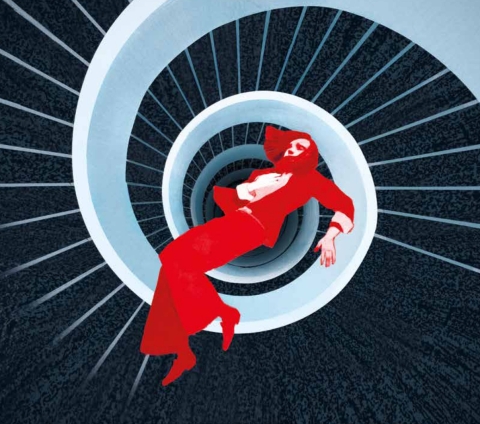Italian Neuroimaging Network Initiative (INNI) is a project funded by Associazione Italiana Sclerosi Multipla (AISM) through its Italian Multiple Sclerosis Foundation (FISM) and is the only large-scale database of magnetic resonance imaging (MRI) data currently available for multiple sclerosis (MS).
Alone you can go faster, but together you can go farther. People with MS and AISM are well aware of this concept. This also represents a more and more rewarding strategy in the world of research, as confirmed by professor Massimo Filippi, Director of Neuroimaging Research Unit and of the Multiple Sclerosis Centre at the San Raffaele Scientific Institute in Milan and the Principal Investigator of the INNI project, that he presented at the 2019 FISM Congress during the World MS Day: “INNI is a project started in 2014 and funded by AISM and its Foundation (FISM) that is aimed to provide a fundamental but currently unmet answer in the world of MS: the creation of a big database of MRI scans from a large number of patients with MS spanning the main disease clinical phenotypes who are also followed longitudinally for many years. This has been widely discussed and some attempts are ongoing to create a similar database on an European level, however, at present, INNI is the only large-scale MRI database currently available for MS with let’s say, “a certificate of quality.”
This project could not only provide the basis for a scientific request still unanswered, but also for a strategic vision of research and goals to be achieved in the future: “the availability of tools to carry out more robust researches thanks to larger samples and higher variability of MS patients recruited” affirms professor Filippi, “ allows to refine our methods to better understand a complex disease such as MS, but also to provide a concrete response to the overall strategy of the agenda of MS research. Spending together, even a huge amount of money, is more sustainable than spending maybe less, but individually. Working together, sharing a high quality level, is the best way to guarantee an efficient and effective research. And it can also achieve a faster impact in favour of people with MS.”
Is it possible to provide some numbers about the data and explain some of the main characteristics?
«The great innovation by INNI, that makes the difference, is that the computerised database does not contain MRI reports but patient’s MRI scans, that could be used for many types of analysis. To be precise, at present, our “repository” counts 3.400 MRI examinations acquired from MS patients with all the MS phenotypes; 66% are women, 34% are men, with an average disease duration of 12.9 years and an average Expanded Disability Status Scale (EDSS) of 3.0. Three hundred and eleven subjects have progressive forms of the disease. The longest follow-up available among the patients included is 11 years. At the moment, most subjects have a 2-year follow-up. INNI collects MRI scans including conventional and advanced techniques (diffusion-weighted, functional MRI, etc.) as well as clinical and neuropsychological data».
What is INNI’s heart?
«By evaluating large numbers of subjects, the main aim of INNI is to understand which mechanisms can cause an irreversible neurological damage, thus determining locomotor disability, cognitive impairment, fatigue and the other clinical manifestations complained by patients with MS. When we will have understood all these mechanisms and the steps driving from a normal brain towards to a brain with MS pathology, we will eventually identify a cure for MS, able to blocks the road going from one to the other. Thanks to INNI, we will certainly be able to promote research studies aimed to achieve a personalized medicine».
Have been researches already published or have been research projects already developed thanks to INNI?
«In 2017, we published an overview of the project in Neurological Sciences (1). At present, the four promoting centres are carrying out four different fields of research on the available data. At the San Raffaele Hospital in Milan, we are setting up a project to assess the rate of atrophy in a large cohort of patients with the main MS clinical phenotypes and with a variable follow-up from two to ten years. In Siena, the group directed by professor De Stefano, is working on how to optimise methods to quantify atrophy. In Rome, professor Pantano’s group is investigating the cortical reorganisation occurring with MS by applying functional MRI. Finally, in Naples, the group directed by professor Tedeschi will use INNI data to evaluate two sub-groups of patients with MS, one characterized by an extremely high lesion load and another with a very low lesion load to see whether these two patients’ sub-groups are characterised by different features that can explain the different degree of cerebral damage».
AISM funds both INNI and the Italian Multiple Sclerosis Register Project, not only to support the evolution in research but also to have aggregated and consistent data which can support the choices of political decision-makers in terms of social and health policies. If it is true that there is strength in numbers, is there a plan to integrate INNI data with data in the Register?
«Of course. Our database contains also the clinical data of the people for whom we acquired MRI scans, with a complete anonymization. Following a specific request by FISM, the IT engineers, who designed the INNI database, built it to make it compatible with the Italian MS Register. Therefore, we hope that one day the two databases could be merged, to support demands made by Society s such as AISM in terms of social and health policies».
From your monitoring centre, professor Filippi, which new frontiers will research centred on magnetic resonance imaging aim for in the near future?
«The first frontier will be the improvement of the accuracy of MRI for the differential diagnosis of other diseases mimicking MS. Another frontier is the application of MRI to monitor disease evolution. In the future, MRI will allow to show how cortical damage, being present during the initial phases of the disease, can be an accurate predictor of disease evolution over 15-20 years. Furthermore, functional MRI will show better and better how brain and spinal cord damage could influence brain repair and functional reorganization in patients with MS. Finally, we hope that spinal cord will be more considered. This is the part of the central nervous system where all motor tracts pass through. However, it has still not been fully investigated in a systematic and comprehensive way, especially in patients with secondary progressive MS, that are mainly characterized by a severe locomotor disability. We now have the expertise and technologies to make advances also in this area».
[1] Filippi M, Tedeschi G, Pantano P, De Stefano N, Zaratin P, Rocca MA; INNI Network. The Italian Neuroimaging Network Initiative (INNI): enabling the use of advanced MRI techniques in patients with MS. Neurol Sci. 2017 Jun;38(6):1029-1038.








